#it's a unesco world heritage site now btw.
Text

there is a basilica in aquileia that has an ancient roman mosaic of a giant bowl of mushrooms on the floor and i have to admit, nothing would make me feel closer to god than that
#it's a unesco world heritage site now btw.#tagamemnon#queueusque tandem abutere catilina patientia nostra
503 notes
·
View notes
Text
hello everybody, your friendly annoying spaniard is back with more references to spanish culture in pokemon scarlet and violet! here's my previous post btw!
also i'm really thankful for how much y'all are enjoying these :) i'm thinking maybe after i finish the game i could do posts going over the names of the places and the new pokemon designs and their tie-ins into spanish culture (if there's any)!
anyways, let's start!
first of all, just as its leader, medali just looks like your average bland spanish city, that could have been inspired by a thousand different cities across the country. except... there's roman ruins in there! due to its location and general look, i would say the main inspiration for this city is mérida, which is known as the roman capital of spain. founded in 25 BC as augusta emerita, it became the capital of the lusitania province during the roman empire, and it's the best preserved roman city in the country (i went to excavate there for three weeks and loved it there, i really recommend it!). the roman ruins are a unesco world heritage site, and its most recognizable monument is actually the theatre [pic 5], where there's roman-style plays are still performed (i've seen three there and its an unreal experience). due to the look of the theatre in game, it could also be a reference to other roman theatres in the country like bilbilis [pic 6], carthago nova [pic 7], or segobriga's [pic 8].
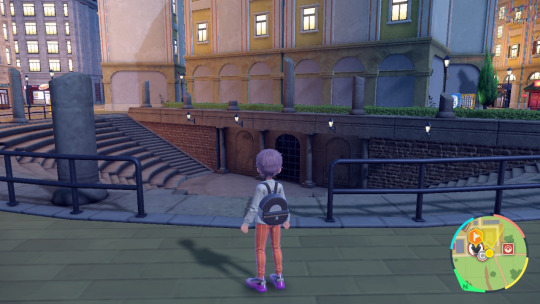



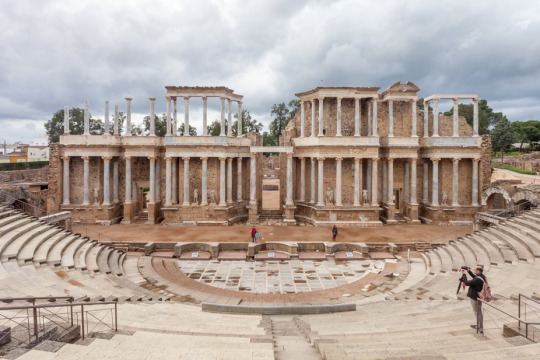



all of mount glaseado trainers have basque names!!! i don't know if this is the same in the english version, but this is a very neat detail that prepares you for montenevera, which i'll talk about down below. before that tho, i want to redirect you to this post by the incredible blog @beautiful-basque-country where they talk in depth about all references to basque culture in the games! i'll touch on them as well but of course not as good as them :)


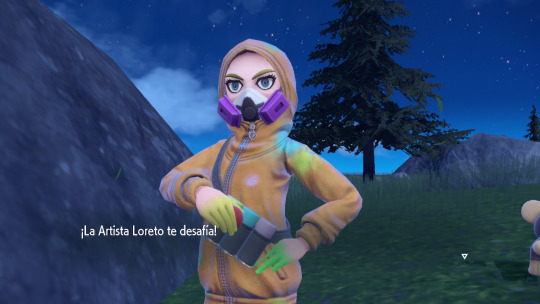

anyways, montenevera. just to start, in spanish the name of the town is 'hozkailu town'; 'hozkailu' is 'fridge' in basque (just as 'nevera' is fridge in spanish). the architecture of the town is also reminiscent of basque architecture, with all houses looking like baserri, the traditional houses of that area. the cold setting is also a reference to basque country, being colder than other regions in spain and mount glaseado being a reference to the pyreenees; the westernmost part of them lie in euskal herria (the basque land).

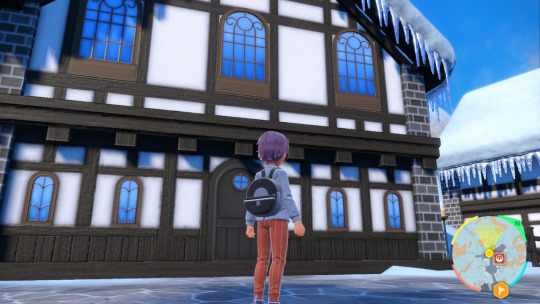
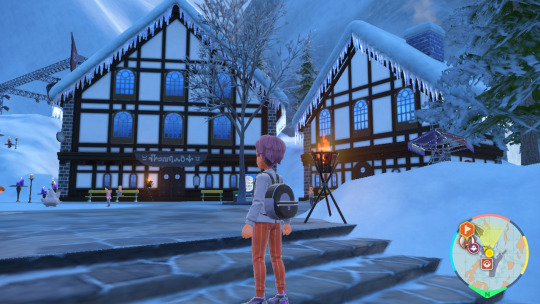

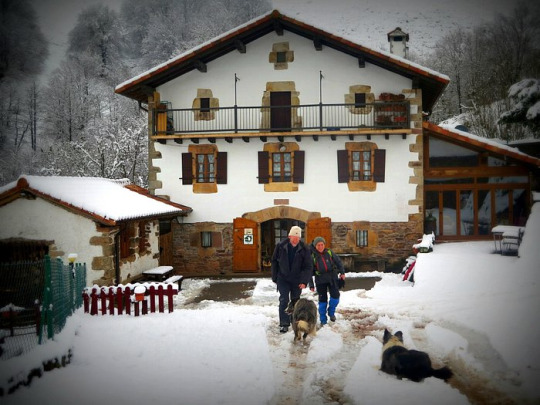

i also love the detail of the candles in honour of the deceased, i don't know how extended is this tradition or if it's practiced in other countries (i imagine it's not uncommon in catholic places???) but at least in my family on the anniversary of a family death we lit up a candle in the house in their memory :)

another fun thing referencing basque culture is that the mc in the gym (i have no idea what his name in the english version is, in the spanish one he's mc bull-a which is fun) speaks in a 'basquified' way, using basque ortography while speaking spanish (switching ch for tx or c for k for example!)


AND BETTER THAN THAT, THE GYM TRAINERS ARE REFERENCES TO SPANISH MUSIC THEMSELVES!!!! i genuinely didn't think i was gonna see amaia montero in a pokemon game, but here we are i guess. anyways, the first trainer, who's named mikel, a basque name (maybe a reference to mikel erentxun?) references the incredibly bop and cultural phenomenon that was uno más uno son siete by fran perea, which served as the opening song for one of the most beloved spanish tv shows ever (it's kinda like our f.r.i.e.n.d.s or, now that i think about it, more like how i met your mother due to the atrocious ending). he talks about 'one plus one not being two' (the song's title translates to 'one plus one is seven'), and directly quotes the song when defeated. i cannot emphazise how incredibly cool and great this is, literally the peak of pokemon. i cannot put into words what i felt when i saw it in game.


but nothing, and i repeat, NOTHING, could have prepared me for the next trainer... she's literally amaia montero, who was the singer of probably the most influencial group in spain from the 2000's (there's no group i can compare it with so you can understand the magnitude of it, maybe paramore but i'm biased cause they're both my favourite groups ever lol): la oreja de van gogh. it is jukebox musical-worthy iconic, that's the grip this band has on spanish society. i was gonna choose one song of them to show to y'all but i simply cannot link only one, so here's a post a made some years ago of my top 25 lodvg songs, please listen to at least one of them you won't be disappointed. anyways, yeah. even the model looks like amaia lol.
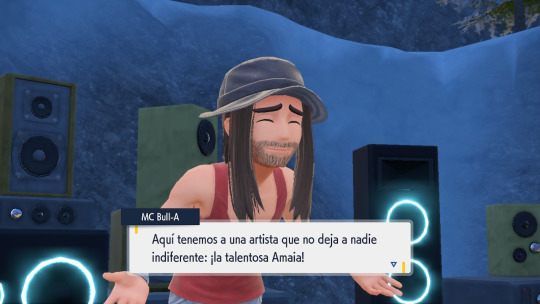

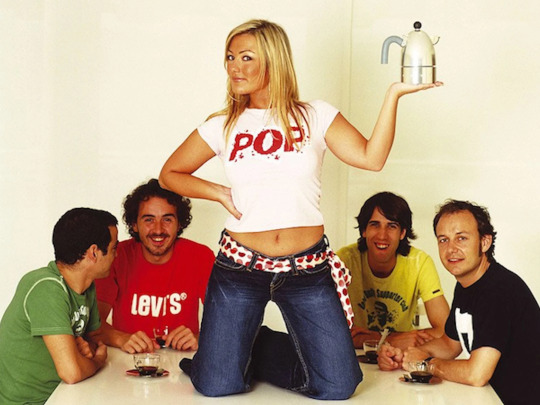
finally, i wanted to talk about the real lore behind the history classes for a while, but i always forget lol. i was gonna make a comment in a previous post about the paldean empire being a reference to both the roman and spanish empires but i dismissed it as being too obvious of a reference (like talking about the tauros regional form which... you know, i don't think i even have to talk about it lol). i didn't took a screenshot of it, but in one of the classes she also talks about the origin of the academy, saying that it was 805 years old, being the oldest in the region. well, the oldest university in spain, the university of salamanca, has 804 years (it was founded in 1218! also maybe this means they were planning on releasing the game next year?)




and that's all for now, hope you enjoy the post!
and here's the next post :)
#pokemon#pokemon scarlet and violet#pokemon sv#pokemon spoilers#pokemon sv spoilers#maybe i listened to the whole lodvg discography while making this post...
58 notes
·
View notes
Text
Cultural References in “They Are Out There Saying”
It took me forever to compile it, but here it is! A brief explanation on all the references to Japanese culture I made in my JayDick Summer Exchange fic “They Are Out There Saying”.
https://archiveofourown.org/works/25707886/chapters/62420596
When I got the prompt from @paperempires calling for the Batman Ninja verse, I was like, you want 16th century Japan? I SHALL DELIVER.
Ok, so first, let’s talk about geography.
Right now, Japan is divided into prefectures, but in the past there were provinces. Check out the map below.
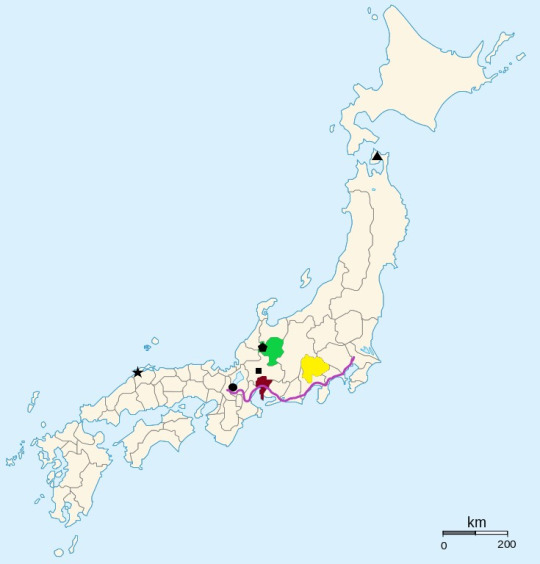
Green: Hida Province
Aka the province where this fanfic actually takes place. Nowadays the Hida-Takayama region in Gifu Prefecture.
Located there is the hidden village of the Bat Clan, the calligrapher's house, as well as real places briefly mentioned: Takayama city with its castle (ruins) and Tenshōji Temple (associated with True Pure Land school of Buddhism), and Shirakawa Village (diamond shape on the map).
Btw, Shirakawa Village is a UNESCO world heritage site and overall a lovely place. If you have a chance to visit it, please do. Here, check it out 😊.
Also, Hida is one of the two places in all of Japan where gneiss, a type of metamorphic rock, can be found. A piece of trivia I learned from my best friend (who might or might have not dared me to fit gneiss somewhere in the fanfic) 😉. The second place where gneiss can be found - again, true fact - are Oki Islands, the archipelago north of the Grand Izumo Shrine.
Dark red: Owari Province
Nowadays part of Aichi Prefecture.
According to the Batman Ninja (the version with Japanese voice over) Joker made himself a feudal lord of this province. Which is kinda interesting, seeing as Oda Nobunaga (1534-1582), one of the key players during the warring states period who started the unification of Japan, was a lord of that domain.
Located in Owari is also Alfred's teahouse 😊.
Yellow: Kai Province
Nowadays, it's Yamanashi Prefecture.
Penguin made himself a feudal lord of this domain. In Batman Ninja he really commanded penguins wearing samurai armour 😂.
Violet line: Tōkaidō Road
A tract that linked Kyoto, a seat of the emperor, and Edo (present day Tokyo), the seat of shogun.
So, traveling the Tōkaidō Road didn't become a thing until the 17th century ^^". But I figured, if castles can be weaponized in this verse, then I can send Jason down this road 😊.
On the side note, travelling the Tōkaidō Road became quite a subject in the culture of the Edo Period (1600-1868). For example, check out these famous ukiyo-e.
Star: the Grand Shrine of Izumo
Very much a real place. One of the three most important Shintō shrines in all of Japan. Worshipped there is Okuninushi no Okami, god of marriage. When praying in the Grand Shrine, a pilgrim is supposed to clap their hands four times, not just two like everywhere else. That's because in that Shrine one is not praying just for themselves, but for their destined partner too.
The Grand Shrine is located in the Izumo Province - nowadays a part of Shimane Prefecture.
*Even today Izumo is called a place where fates are being brought together 😉.
Circle: Mt Hiei
Again, a real place, located very close to Kyoto. The Enryakuji temple located on that mountain historically had big influence also due to the fact, it commanded its own army of warrior monks. Some further reading on them, if your interested, is here.
(Btw, the Enryakuji Temple is also a UNESCO world heritage site.)
It was emperor Shirakawa (1053-1129) who one said that the only things he does not have control over are the roll of dice, the waters in Kamo River and the warrior monks of the Enryakuji Temple.
*Kamo River flows through Kyoto.
Square: Inabayama Castle
Nowadays called Gifu Castle, located in Gifu City, Gifu Prefecture 😊. One of few castles built on top of a mountain.
Triangle: Mt Osore
A real place, considered one of the most sacred in all of Japan. A site of Bodaiji Temple. Due to the volcanic activity in the area, there's sulfur both in the air and in the lake right by the temple - hence its striking colour. Otherwise, the landscape is barren.
It is said that Mt Osore matches the description of Buddhist hell, and holds the entrance to the afterlife. For some further, light reading check here.
If you think to yourself wooow that's a lot of references then fear not - there's more 😂.
Other references
Fuke Sect of Buddhism
Monks of this sect, as a part of their practise, wore basket hats, played flute, and were on constant pilgrimage.
Travel, however, used to be heavily restricted, so in exchange for a special travel permit, monks were asked to spy for the shogun. Also, ninja (and other people involved in espionage) were known to donn on the attire of a Fuke Sect monk. For that reason, monks were sometimes asked to play on their flutes to prove their identity.
In Batman Ninja Jason is operating undercover as one of those monks.
Check this, for some further reading.
Direction of the Demon’s Gate
It’s north-west. It was believed that demons and evil spirits enter through that direction, hence it was considered unlucky.
Rokuyō (lucky/unlucky days)
A circle of six days, three of which are thought to various degrees lucky, another three - to various degrees unlucky. The most unlucky one is called butsumetsu and apparently is meant to symbolise the day Budda died.
Ri
Old unit of measurement. 1 ri ≈ 3.9 km ≈ 2.4 mi
Sexagenary cycle
A cycle of 60 years. It was traditionally used in China for time reckoning, and was known in other South-East Asian countries too.
For some further reading click here.
Golden leaf
Kaga Province (north-east of Hida; now part of Ishikawa Prefecture) is known as the biggest producer of golden leaf in all of Japan.
Zen Circle
On the photo below:
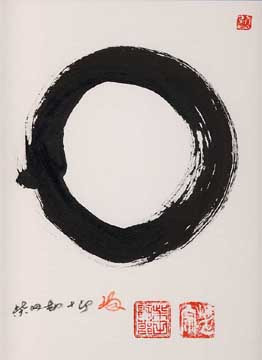
It’s an important symbol in Zen Buddhism that stands for enlightenment, absolute, the void. In Japanese calligraphy and sumi-e (ink painting), drawing the circle is seen as an expression of absolute freedom of the mind that lets the body create. If it’s closed, it symbolises perfection. If not, it becomes an expression of wabi-sabi - a concept in Japanese aesthetics that translates to beauty of imperfection.
Kappa
One of the fantastic creatures that appears in many Japanese folktales. Kappa is a water demon that (unsurprisingly) dwells in lakes and rivers. It is rather mean and known to cause mischief, but surprisingly enough - very fond of cucumbers.
Ogre (oni)
One of the fantastic creatures featured in Japanese folklore. Usually portrayed with red skin, horns, and a tall, hulking figure; as a concept somewhat similar to demons or devils, as they represent everything evil and harmful (and also, oni reside in the eight great hells). It was believed a human wicked beyond any redemption might turn into an ogre.
Haikai-no renga
A genre of linked verse poetry. It is made of 18 or 36 verses that alternatively have 17 (5-7-5) or 14 (7-7) syllables. It is less formal than an earlier genre, renga, and as such is supposed to be lighter, witty, comical even. There aren't as many rules dictating which verse is supposed to have a direct allusion to which, how many times and in which verses certain motives (like flowers, moon, seasons) can be mentioned.
Still, the first verse is supposed to contain kigo, so a word or phrase that indicates the season - in the fanfic it’s May (rice planting season) which is classified as early summer in the old lunar calendar - or in some other clever way gives an allusion to the environment the poetry meeting took place in. The first verse is also supposed to be written by the guest of honour which is why Jason was asked to compose it 😊. Important is also the third verse, as that’s where the theme of the whole haikai-no renga is officially established.
From the first verse of haikai-no renga evolved possibly the most recognisable form of Japanese poetry - haiku.
Lovers’ suicide
A suicide committed together at the same time by the lovers whose shared affection defied the rules of society and/or obligations to their families. Before commiting the act, they would usually pray to be reborn together on the same lotus flower in the Pure Land.
Lovers’ suicide is a theme featured in plays for pupper theater bunraku, most prominently The Love Suicides at Sonezaki written by Chikamatsu Monzaemon.
Pure Land
In a nutshell: According to some schools of Buddhism in Japan, Pure Land where people can be reborn and practice pure version of Buddhism, thus are able to finally gain enlightenment (which is impossible when alive, because the practice in the land of the living is warped, impure).
Please, take my way too short explanation with a grain of salt. It might not seem that way, but I’m not all that knowledgeable about Buddhism ^^”.
Nenbutsu prayer
Practised in True Pure Land Buddhism. It’s basically a recitation of a short phrase that translates to “I take refuge in Buddha Amida”.
Kannon
The bodhisattva associated with compassion.
Vengeful ghost
It was believed that a person who harboured a deep grudge or hatred in their last living moments towards those who had wronged them could become a vengeful spirit.
*Hoichi the Earless - one of the traditional horror stories. In this story, vengeful ghosts (of the fallen Taira clan) want to take with them a blind monk because he beautifully plays on biwa (traditional instrument). Once his brethren realise the danger Hoichi is in, they paint his whole body in Buddhist sutra, safe for his ears. Because of that, when the ghosts appear again, Hoichi - safe for his ears - is invisible to them. Spoiler alert, the ghosts take Hoichi’s ears, thus the earless in the title. Check out here for some further reading.
Ten Virtues of Tea
Text attributed to a Buddhist monk Myōe (1173-1232. It lists all the properties of green tea beneficial to the human body and soul.
Translation can be found here.
Portuguese firearms
Historically, the first Europeans Japanese people came in contact with were Potuguese traders. They introduced many European goods including firearms.
On the unrelated note, the Potuguese in that time period were referred to as Nanbanjin (南蛮人) which translates to southern barbarians.
Eight great hells
...are the concept of hell in the traditional culture in a nutshell. The concept itself was heavily influenced by Buddhism.
Further reading is available here.
Shinto wedding ceremony
While it incorporates many rites, the most core one (as far as I know) features the groom and the bride taking turns drinking sake (rice wine) from three cup, each slightly bigger than the other. When drinking, they are supposed to sip three times.
In feudal times, wedding ceremonies started with an elaborate bridal procession to the groom’s house. There, the dowry would be presented, blessings would be given, and then the bride and groom would take turns drinking sake as described above.
...Okay, I believe that’s it. Thank you for reading!
#jaydick summer exchange#fanfic notes#jaydick#japanese culture#references explained#i am such a nerd
31 notes
·
View notes
Text
Farewell Trip #4. Iksan, Jeolla Bukdo/익산, 전라북도. May 7-9, 2021. Part 1 (out of 3)
A city steeped in ancient Baekje Kingdom history.
For the video diary of the trip, click here:
https://www.youtube.com/watch?v=yMQLWpdVHgQ
It seems I’ve started covering Jeolla cities even if it hadn’t been my intention. After the Jeonju and Gunsan trips, I spent two days in Iksan, May 7th -9th. I’ll cover all the basics and then some more: how I got there, where I stayed, what I visited, what I ate and drank, what I liked and possibly disliked. But before all of that, a brief introduction of Iksan…

Iksan’s history dates back to the kingdom of Baekje, one of the three ancient Korean kingdoms, the other two being Kogoryo and Silla. The two UNESCO World Heritage Sites, Mireuksaji Temple Site and Pagoda and Wangnungri Temple site and the Five-story pagoda are from this period. The city is rich in many historical sites that are, sadly, not well-preserved and one has to rely on imagination and digital representations of what it all may have looked like. Still… we enjoyed roaming these atmospheric places, in spite of the suffocating air pollution and yellow dust.
History that'd rather be forgotten...
Iksan is not only famous for its glorious Baekje past but also quite infamous for the misfortunes that fell on the city and the area. One of them was the explosion of a freight train carrying 40 tons of dynamite, in 1977. It was of such magnitude that it created a crater 10m deep and 30m wide, 59 people died, 185 seriously injured, over 1300 suffered some degree of injury, 9500 buildings were damaged leaving 10,000 people homeless. The government officials’ heads were rolling… The really odd thing is that there exists not a single commemorative sign of this ever happening. Should only ‘good’ history be recorded, then? Another horrible thing that happened here is the culling of over 400,000 chickens, ducks and geese in 2006 due to the rampant bird flu in the region.
Now that you're properly covered in goose bumps, let me tell you about the trip itself.

The entrance to the Headquarters of Korean Won Buddhism, an offshoot of Zen Buddhism.

I took the KTX and arrived at Iksan station at around 10:00 a.m. (Btw, on the way back, it being the parents’ day weekend, all the trains had been fully booked so I resorted to a bus that was very comfy but the ride was very long. The usual 2,5 hours turned into 5,5. Urgh!)
I travel mostly alone, and I must admit I like it that way, but every once in a while it’s a treat to travel with someone and be able to share impressions and, more than that, meals, a cuppa or a drink. This time I travelled with a Saffer friend I had met in Sokcho last year. What’s with me and South Africans? Most of my closest friends are from there! She had booked two rooms for us at a motel called Sopung, an okay place for the price excepting the yellowish not-too-fresh smelling bedsheets and extra thin walls that one night allowed me to hear the sounds of a very brief yet very loud copulating exercise next door followed by very loud AND very long-lasting snoring.
WHAT'S RECOMMENDED TO BE SEEN IN IKSAN...
The more I travel, the more I wonder how on earth people had travelled before the dawn of the Internet and more recently, online maps. Having done a lot of reading about the area and using Katalk maps while there, I felt almost like a local. In most cases I knew exactly what I wanted to see and how to get there. Maybe not everyone’s preferred way of travelling, but I usually like to be well informed allowing myself to swerve off the planned path and get lost in the new and unexplored. There are many attractions in Iksan but they are so spread out that having a car to drive around would have been wonderful.
The lack of time is to blame for not having made it to the old Catholic church, Nabawi Seongdang/ 나바위 성당 with its uncharacteristic mix of western and eastern architecture and an equally interesting protestant Church, Dudong Kyohwae/ 두동교회, interesting because even today it seats men and women separately following the old Confucian rule of gender separation. Perhaps a reason to visit Iksan again…
Still, there were plenty of places that I got to see: the headquarters and the research center of Korean Won Buddhism / 원불교중앙총부 and the Wonkwang University campus /원광대학교, the Mireuksaji Temple Site and the Mireuksaji Pagoda / 미륵사지 석탑 and the adjoining National Museum/국림익산 박물관, the Wangnugri Ruins with the Five-story pagoda / 왕궁리유적 과 왕궁리 오층석탑, The Jewelry Museum / 보석발묵관, Gosrak / 고스락 with its thousands of kimchi and soy bean paste pots, and the Prison Filming site /교도소 세트장. I also had planned to visit a charming looking Instagram darling 왕궁리다원 / Wangnungri Dawon, a teahouse situated in a 150yr old hanok. I made it there walking for 30 minutes in sweltering heat, humidity and bad air along a very busy road only to find it closed in spite of Google stating that it was open. Urgh! Never trust anything you read on the Internet - exept my blog, of course. So, let’s go to...
...THE HEADQUARTERS OF WON BUDDHISM / 원불교중앙총부

A very North Korean, socialist look... no?

Above: a Won Buddhist surrounded by a Confucian scholar, an imam, a cardinal, and a zen buddhist. Religions of the world unite! A good message that usually falls on deaf ears. Notice the circle on the robe in the middle - well, that was a symbol seen everywhere. We had lots of fun spotting them everywhere even they they had nothing to do with Won Buddhism.

The grounds had a variety of building in different architecturalr styles. This one: a typical Japanese house. It was very quiet and beautiful, only leaves rustling and birds chirping.

Because we had some confusion with finding our motel, we were running a bit late with the sightseeing on the first day, so we decided to stay in the city and just visit the headquarters and the campus, which suited me perfectly well because the night before I had hardly slept and felt quite tired. According to Wikipedia, “Iksan is the center of Won-buddhism, an offshoot of Korean Zen Buddhism established by Park Chung-bin who mixed Buddhist teachings with those of Confucianism.” Well, his teachings are not vey original, from what I gathered, but they are still of the gentle and inclusive kind, so fine by me. Won means circle, and, boy, did we see many circles on the grounds of the headquarters and the campus of Wonkwang University, also founded by the fathers of Won Buddhism. The headquarters grounds are relatively extensive and they feature a mishmash of buildings in a variety of styles, from grand halls with curved blue roofs reminiscent of North Korean architecture to lovely, quaint hanoks and Japanese-style houses. I loved that we were there on a breezy day when a variety of trees and blooming shrubs rustled pleasantly as we explored. After roaming the manicured grounds and taking dozens of photos, we felt quite hungry and were happy to discover a café door partially covered in ivy on the grounds. It didn’t only have a very pleasant interior, but also served the best rye bread, bacon and egg sandwiches. I also had a delicious kale / green grapes smoothie.Our server told us that the university grounds were well worth a visit, so with bellies full, we headed there.
WONKWANG UNIVERSITY CAMPUS

The server was right: wow! A beautiful campus.

Phoenix statues were everywhere. Sorry, that we called you ‘cock’, ‘chicken’, ‘rooster’ in our touristy ignorance.

The campus, indeed, was lovely and quite big. What impressed me the most was a pond and a walking path around it lined in sculptures of famous thinkers, from Socrates to Jesus. A bunch of extra large, loud and energetic male ducks floated then swam vigorously on the surface of the pond and a footbridge led to an unusually shaped coffee shop in the middle with a phoenix on the rooftop. A little further we stumbled upon a much larger Phoenix sculpture overlooking another, smaller pond prettily framed in beautiful irises and crossed by a tiny arched wooden footbridge. We also saw a performance arena, its dome painted rainbow colors where a bunch of students were practicing some ‘moves.’
After we had our fill of all the campus wonders, we took a bus back to town, walked around a bit passing through streets that offered many ‘oneroom’ rental options for students. We really wanted to have a drink, but failing to find a suitable drinking establishment, we settled for a couple of bottles of makkolli on the terrace of a local 7-Eleven, totally glamming it up! Sadly, this fine place didn’t have any type of local makkolli, frurstrating my mission to taste the local brew on my farewell travels. But fret not, this was remedied at dinner consisting of kamja tang a.k.a. “pig spine soup,” which was delicious in spite of the name that may make you expect otherwise. Back at Sopung, we relaxed a bit with TV and some more makkoli and then it was off to Bedsky. Stay tuned for part 2 and more adventures in Iksan.
https://www.youtube.com/watch?v=yMQLWpdVHgQ
0 notes
Photo

I'm bringing some special knife anytime I travel abroad. No comments about this one for now, see yourself. And yes - this is the mysterious "stainless" iron column in Delhi. Imagine a knife forged from a piece of it! Swipe for the first skyscraper in human hustory, Qutub Minar is 72 m. tall. And BTW it knives are restricted in that area. ☺ В каждое путешествие я беру с собой нож. Сейчас это не мой собственный, а фабричный, но с изюминкой. Пока без комментариев. И кстати - это действительно та самая таинственная железная нержавеющая колонна в Дели. Представьте себе нож из этого металла... Свайп - Кутуб Мин��р, первый в истории небоскрёб высотой 72 метра. Ножи, кстати, туда запрещено проносить. ☺ (at Qutub Minar - Unesco World Heritage Site)
0 notes